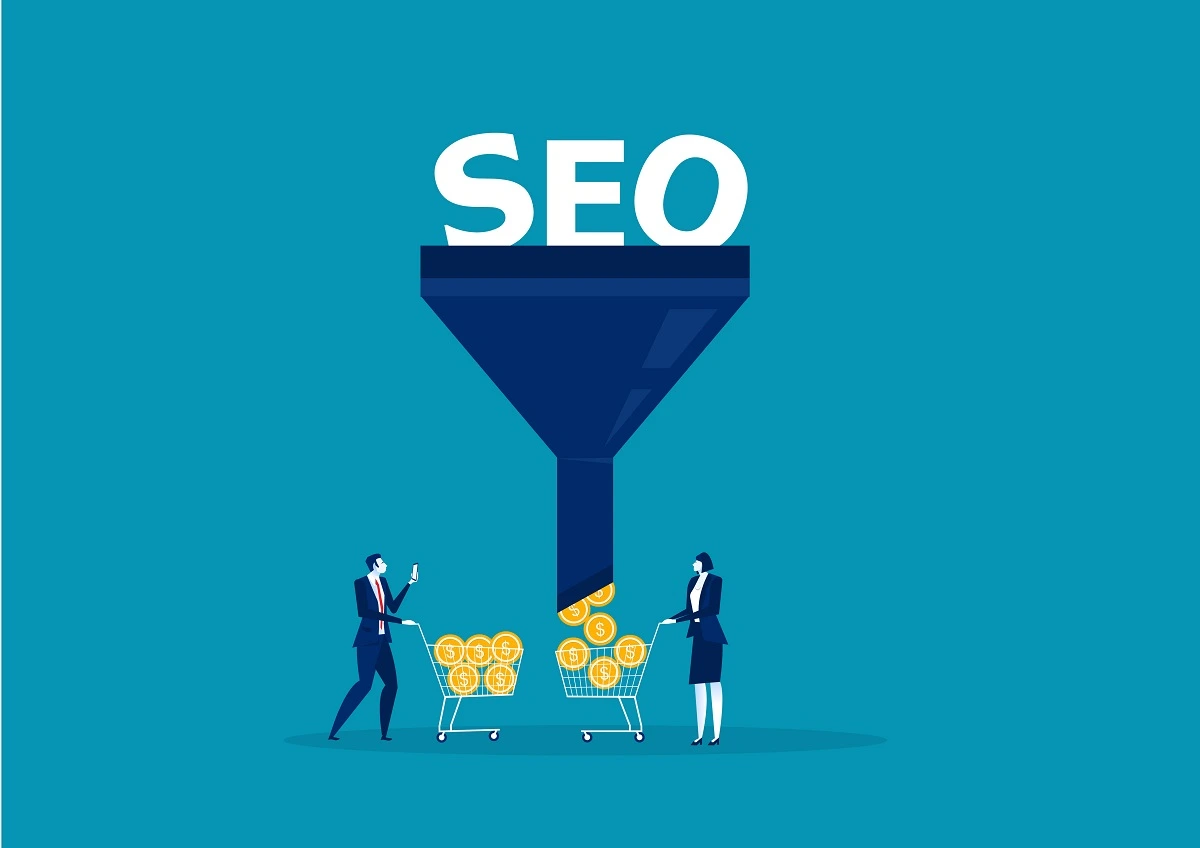Create an SEO Strategy That Guides Leads Down the Sales Funnel
How to Create an SEO Strategy That Guides Leads Down the Sales Funnel
People no longer open a phonebook when they need to research a new partner or vendor. They open Google and search the internet for solutions.
Buyers who find your site through Google are spread across all stages of the sales funnel – and most are nowhere near converting into a customer.
Average landing page conversion rates are only 2% to 5%, which means up to 98% of people who visit your website aren’t going to convert.
The right SEO strategy meets visitors where they’re at in the sales funnel. Your SEO should focus on helping visitors and gently nurturing them.
SEO Lets You Reach Buyers at Every Stage of the Sales Funnel with Relevant Content
The B2B journey isn’t linear, with up to ten decision makers involved in every purchase. It’s nearly impossible to map out the journey point-by-point.
SEO can help.
By studying your ranking keywords, you can figure out the general intent and stage behind each visitor.
For example, someone reaching your website after searching the keyword “what is martech” is at a very different stage than “best types of martech for finance.” The first visitor is still in the awareness stage while the second is evaluating potential tools.
You can also pinpoint general search intent by conducting branded keyword research for your own organization. You might find lots of searches for terms like “Salesforce vs. HubSpot” where buyers are looking for product comparisons.
SEO is important for meeting each visitor’s unique needs across the sales funnel. You can gain leverage over competitors simply by producing content your buyers want – like product comparisons.
SEO and high-quality content matter: Buyers are 3x more likely to close a bigger deal without regret when companies provide content to make the buyer’s journey easier.
How to Use SEO to Guide Leads Down the Sales Funnel
Using SEO for your sales funnel is mostly research and only involves a small amount of action. Research is key to understanding how people interact with your website and how to create content for every stage.
Research and Organize Keywords for Each Stage of the Funnel
When creating a piece of content, it should target a distinct stage of the sales funnel with a relevant keyword.
Broad keywords like “AI in marketing” work well for building awareness about your brand and offering solutions to pain points without providing any promotional content.
Long-tail keywords like “buy AI tools for marketing” mean someone is right at the end of the sales funnel and wants a solution they can purchase right now.
Optimize PPC Keywords and Associated Landing Pages
PPC ads should be highly targeted with only a handful of similar keywords for each ad. Likewise, the landing page’s content should match the search query’s question or problem.
Make sure each PPC ad relates to the keyword’s stage of the funnel and isn’t necessarily pushing a sale.
Create Content for Specific Accounts and Firmographics
Micro firmographics – like job roles, duties, and company – are important for building relevant SEO content for each stage of the sales funnel. Without building complete buyer profiles, content will never be relevant enough to relate to anyone.
Organize Content by Vertical and Pain Point
Make content easy for visitors to find when they arrive at your website from search results. Looking at a menu and only seeing the word “blog” doesn’t tell new visitors what your site is about and who you help.
Organize your content by industry, vertical, issue, or pain point so visitors can find something relevant no matter where they came from. Plus, you can use the analytics to collect valuable behavioral data.
Include a Relevant CTA with Each Piece of Content
Your CTA should always relate to the keyword’s intent and visitor’s stage of the sales funnel. If someone arrives at your website from an awareness-based search, don’t direct them to your sales page right away.
Instead, nurture them by recommending another piece of valuable content a little further down the journey.
Aim for Quality and Consistency – Not High Frequency
To win at SEO in your sales funnel, you must rank well in Google so searchers can find you. Publishing high-quality content once or twice a week is much more effective than publishing five mediocre blogs a week.
You must prove to Google that you’re an expert in your industry. Long-form thought leadership content is key.
Use Marketing Automation to Nurture Leads On-Site and Off
Artificial intelligence and other automation tools can help deliver the best piece of content to each lead no matter their stage of the sales funnel.
For example, an AI engine on your site can offer personalized content recommendations based on a visitor’s company, industry, or pain point from their browsing behavior. Meanwhile, automated email marketing can send personalized journeys based on subscriber behavior.
SEO in Your Sales Funnel is Worthless Without Quality Content
If SEO is the backbone of your sales funnel, quality content is the muscle. Content should empower your buyers to make better decisions. Anything less than 100% relevance and usefulness is nothing more than noise.


